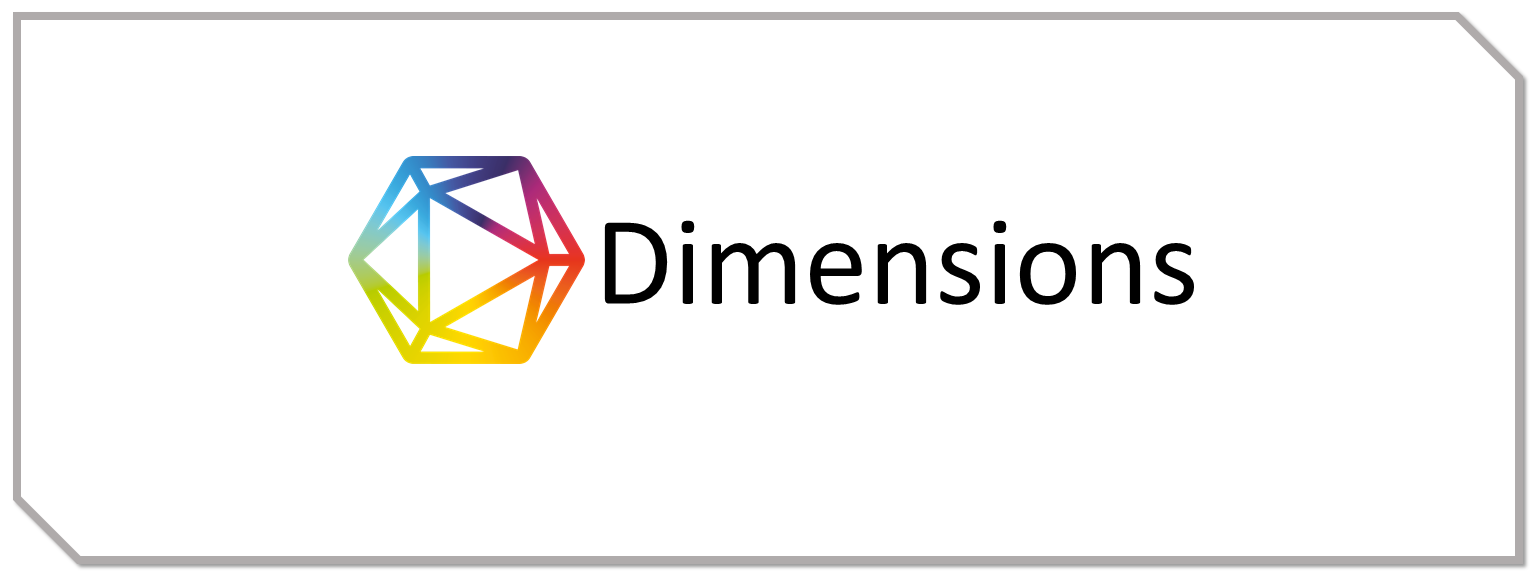Pornography Use and Its Impact on Professional Performance of Faculty of Medicine Udayana University Students
Introduction: Pornography is a medium containing sexual content in various forms that is used to satisfy the sexual desires of its consumers. Technological advancements have eased access to pornography, increasing consumption especially among the productive age group. Addiction to pornography has several negative impacts such as increasing anxiety, stress, and depression, which reduces productivity. This study aims to determine the level of pornography addiction among students of the Faculty of Medicine at Udayana University and its impact on their productivity. Methods: This research is an analytic study with a cross-sectional design to determine the effect of pornography on the productivity of Udayana University students in 2021. The research instrument are collected through questionnaire in the form of Google Forms, distributed to the 2021 cohort of the Faculty of Medicine at Udayana University anonymously to allow respondents to be more open about their pornography use, thereby enhancing the validity of the research. The results were then analyzed using an independent t-test with SPSS version 26. Results: The Pornography Craving Questionnaire revealed that 19.44% (n=14) of respondents were addicted to pornography. Those who were addicted were dominated by male respondents (26.53% vs 4.34%). When compared to productivity scores from the Individual Job Performance Questionnaire, those who were addicted had an average score of 1.30 points lower than those who were not addicted, with a P-value <0.001. The non-addicted group showed significantly higher average productivity. Conclusions: Pornography negatively impacts users’ productivity, prompting more workplace interventions in the future.
Introductions
Pornography is a medium containing sexual content that can take the form of images, photos, text, sounds, animations, cartoons, conversations, or body movements, typically used to satisfy the sexual desires of its consumers. The word pornography is derived from the Greek language, specifically pornographos, which consists of two words: porne (meaning "a prostitute") referring to prostitution, and graphein (meaning "to write or draw"). Thus, pornography can literally be interpreted as writings or illustrations about prostitution. It can also be understood as content depicting human behavior explicitly, intended to fulfill sexual desires. Today, pornography is often regarded as something immoral and deliberately presented to provoke sexual arousal[1].
The definition of pornography in an article is complex and subjective, depending not only on the nature of the material but also on individual perceptions and social context. However, universally, pornography can be defined as explicit sexual content aimed at arousing sexual desire, encompassing all forms of its material[2].
Advances in technology today have made access to pornographic content much easier for many people. This, of course, has contributed to an increase in the number of consumers of pornography. According to a study conducted in Poland, there was a significant increase in the number of pornography consumers between 2004 and 2016. The study recorded a threefold increase (310%), from approximately 2.76 million consumers to 8.54 million by the end of the observation period. The study also found that pornography consumption is more common among men than women and is generally consumed by individuals aged 18–27 years[3].
A study shows that pornography use can negatively affect the brain by increasing stress, anxiety, and depression, while also creating inner conflicts with personal values and identity. It affects the brain's reward system, particularly the prefrontal cortex, which is responsible for decision-making and impulse control, and the striatum, which is involved in motivation and rewards. Over time, repeated exposure can lead to desensitization, causing users to seek more stimulation for the same level of satisfaction. This impacts emotional regulation and mental wellbeing, and can contribute to addictive behavior[4].
According to Introduction to Addictive Behaviors, Fifth Edition, pornography can become an addictive behavior due to the brain's reward system, which is activated when consuming sexually stimulating content. Similar to substance use, pornography consumption stimulates the release of dopamine, a neurotransmitter associated with pleasure and reward. Over time, repeated exposure to pornography can cause the brain to require more intense or frequent stimulation to achieve the same level of satisfaction, leading to tolerance. This process is similar to other forms of addiction, where it also requires treatment and intervention, which may include therapy[5].
The relationship between pornography and sexual dysfunction remains a topic of debate in various studies. Sexual dysfunction is often linked to erectile dysfunction, hypoactive sexual desire disorder, and delayed ejaculation. One study also suggests that adolescents who consume pornography before ever engaging in direct sexual intercourse tend to experience difficulties in reaching climax during actual sexual encounters. This is because they struggle to develop the synaptic connections that can respond to real sexual experiences[6]. Pornography addiction is also explored in Behavioral Addictions, where the book highlights how this behavior can lead to desensitization of the brain’s reward system, escalating consumption while impairing natural arousal mechanisms and contributing to intimacy issues and sexual dysfunction. Additionally, the social stigma and shame surrounding pornography addiction often hinder individuals from seeking help, exacerbating psychological distress and complicating treatment[7].
Dependence on pornography poses problems for the quality of life of its users. Addiction to pornography can affect the mental and social health of those who consume it. It is often associated with anxiety, stress, and depression. Several studies have also revealed a positive correlation between the frequency of exposure to pornography and levels of depression and anxiety[8]. Compulsive or problematic use can also have a significant impact on mental health, including an increase in anxiety. This occurs due to the emotional discomfort and psychological conflict arising from the use of pornography, which is seen as inconsistent with the individual's personal standards or values. This causes anxiety as an emotional side effect when individuals feel they have lost control over their behavior[9].
According to research by Vimal & Divyasree with a population of male adolescents, it was found that there was no significant relationship between pornography and sexual depression.
However, there was a significant relationship between pornography and sleep difficulties, with the level of sleep difficulties tending to increase as the desire to watch pornography grew[10]. Another study found a significant correlation between excessive pornography use and insomnia or sleep disorders, where it was found that the higher the intensity of pornography use, the worse the quality of sleep for the users. This is related to the psychological stress caused by pornography use, which affects the ability to initiate and maintain sleep. It is also linked to emotional dysregulation, where individuals with excessive use tend to have difficulty managing their emotions, which in turn can affect the quality of their sleep[11].
A finding stated that pornography addiction has both physiological and psychosocial impacts that can affect productivity. Pornography addiction is associated with risky sexual behaviors and excessive sexual exploration, which can disrupt the user's routine balance. Various effects of pornography, such as reduced focus, poor time management, and emotional well-being
G. Haidar, N. C. Apsari, P. Studi, I. Kesejahteraan, and S. Fisip, “PORNOGRAFI PADA KALANGAN REMAJA Program Studi Sarjana Ilmu Kesejahteraan Sosial Universitas Padjadjaran,” pp. 136–143, 2020.
A. McKee, P. Byron, K. Litsou, and R. Ingham, “An Interdisciplinary Definition of Pornography: Results from a Global Delphi Panel.,” Arch. Sex. Behav., vol. 49, no. 3, pp. 1085–1091, Apr. 2020, doi: 10.1007/s10508-019-01554-4.
K. Lewczuk, A. Wójcik, and M. Gola, “Increase in the Prevalence of Online Pornography Use: Objective Data Analysis from the Period Between 2004 and 2016 in Poland,” Arch. Sex. Behav., vol. 51, no. 2, pp. 1157–1171, 2022, doi: 10.1007/s10508-021-02090-w.
M. Privara and P. Bob, “Pornography Consumption and Cognitive-Affective Distress.,” J. Nerv. Ment. Dis., vol. 211, no. 8, pp. 641–646, Aug. 2023, doi: 10.1097/NMD.0000000000001669.
D. L. Thombs and C. J. Osborn, Introduction to Addictive Behaviors. Guilford Publications, 2019. [Online]. Available: https://books.google.co.id/books?id=uBvwugEACAAJ
B. J. Sadock, V. A. Sadock, and P. Ruiz, “Human Sexuality and Sexual Dysfunctions,” in Kaplan & Sadock’s Synopsis of Psychiatry: Behavioral Sciences/clinical Psychiatry, Wolters Kluwer, 2015, ch. 17, p. 578. [Online]. Available: https://books.google.co.id/books?id=QQmOngEACAAJ
H. M. Pontes, Behavioral Addictions: Conceptual, Clinical, Assessment, and Treatment Approaches. Springer Cham, 2022. doi: 10.1007/978-3-031-04772-5.
R. Guidry, C. G. Floyd, F. Volk, and C. E. Moen, “The Exacerbating Impact of Moral Disapproval on the Relationship Between Pornography Use and Depression, Anxiety, and Relationship Satisfaction,” J. Sex Marital Ther., vol. 46, no. 2, pp. 103–121, 2020, doi: 10.1080/0092623X.2019.1654579.
C. Vieira and M. D. Griffiths, “Problematic Pornography Use and Mental Health: A Systematic Review,” Sex. Heal. Compulsivity, vol. 31, no. 3, pp. 207–247, 2024, doi: 10.1080/26929953.2024.2348624.
A. Vimal and J. Divyasree, “Pornography craving – Its association with Sleep Deprivation & Sexual disappointment among boys,” vol. 8, no. 2, 2020, doi: 10.25215/0802.258.
A. Musetti et al., “The Interplay Between Problematic Online Pornography Use, Psychological Stress, Emotion Dysregulation and Insomnia Symptoms During the COVID-19 Pandemic: A Mediation Analysis.,” Nat. Sci. Sleep, vol. 14, pp. 83–92, 2022, doi: 10.2147/NSS.S348242.
H. Mehmood Qadri et al., “Physiological, Psychosocial and Substance Abuse Effects of Pornography Addiction: A Narrative Review.,” Cureus, vol. 15, no. 1, p. e33703, Jan. 2023, doi: 10.7759/cureus.33703.
R. Setyawati, N. Hartini, and S. Suryanto, “The Psychological Impacts of Internet Pornography Addiction on Adolescents,” Humaniora, vol. 11, no. 3, pp. 235–244, 2020, doi: 10.21512/humaniora.v11i3.6682.
K. N. Baiti, D. Djumali, and E. Kustiyah, “Employee Productivity Viewed from Motivation, Work Discipline, and Environment at PT. Iskandar Indah Printing Textile Surakarta,” J. Ilm. Edunomika, vol. 4, no. 01, pp. 69–87, 2020.
N. Sommet and J. Berent, “Porn use and men’s and women’s sexual performance: evidence from a large longitudinal sample,” Psychol. Med., vol. 53, no. 7, pp. 3105–3114, 2023, doi: DOI: 10.1017/S003329172100516X.
W. W. IsHak, The Textbook of Clinical Sexual Medicine. Springer International Publishing, 2017. [Online]. Available: https://books.google.co.id/books?id=ZyYmDwAAQBAJ
W. Fisher, “004 How Science Studies Pornography Impact and What Science Can, and Cannot, Tell Us,” J. Sex. Med., vol. 16, no. Supplement_3, pp. S2–S2, Jun. 2019, doi: 10.1016/j.jsxm.2019.03.461.
N. Mecham, M. Lewis-Western, and D. Wood, “The Effects of Pornography on Unethical Behavior in Business,” J. Bus. Ethics, vol. 168, Jan. 2021, doi: 10.1007/s10551-019-04230-8.
C. Camilleri, J. T. Perry, and S. Sammut, “Compulsive Internet Pornography Use and Mental Health: A Cross-Sectional Study in a Sample of University Students in the United States,” Front. Psychol., vol. 11, p. 613244, Jan. 2021, doi: 10.3389/fpsyg.2020.613244.
Y. Wang et al., “The current situation of internet addiction and its impact on sleep quality and self-injury behavior in Chinese medical students,” Psychiatry Investig., vol. 17, no. 3, pp. 237–242, 2020, doi: 10.30773/pi.2019.0131.
Femmy T. Fahira, Sulistiawati, and Azimatul Karimah, “The Correlation Between Anxiety and Smartphone Addiction Among Medical Students,” J. Psikiatri Surabaya, vol. 12, no. 2, pp. 126–131, 2023, doi: 10.20473/jps.v12i2.33190.
A. Amalia, Sulistiawati, and Azimatul Karimah, “The Differences of Depression Level and Risk of Suicide in Medical Students in Surabaya,” J. Psikiatri Surabaya, vol. 11, no. 2, pp. 103–109, 2022, doi: 10.20473/jps.v11i2.28024.
Copyright (c) 2025 Fransiskus Asisi Tokan, Lely Setyawati Kurniawan, I gusti Ayu Indah Ardani, Ni ketut Putri Ariani, Marvella

This work is licensed under a Creative Commons Attribution-ShareAlike 4.0 International License.
1. Copyright of this journal is possession of the Author, by the knowledge of the Editorial Board and Journal Manager, while the moral right of the publication belongs to the author.
2. The journal allows the author(s) to retain publishing rights without restrictions.
3. The articles are published under a Creative Commons Attribution Share-Alike (CC BY-SA) license. Many research funding bodies prefer the CC BY-SA license because it allows for maximum dissemination and re-use of open access materials. Users are free to share (copy, distribute, and transmit) and remix (adapt) the contribution under this license, including for commercial purposes, as long as they attribute the contribution in the manner specified by the author or licensor.




























